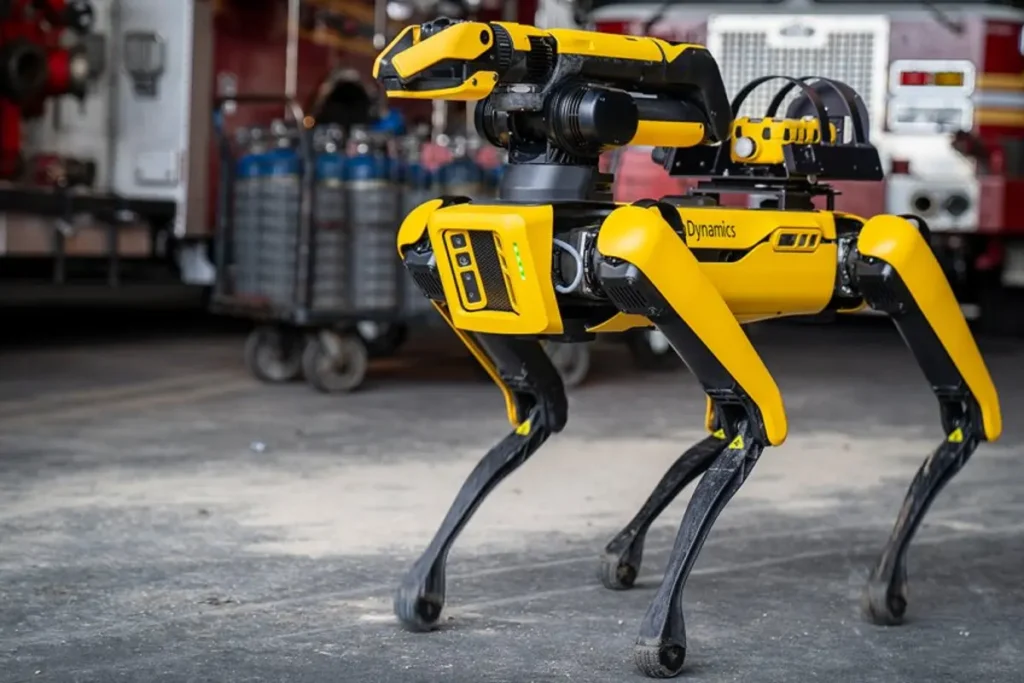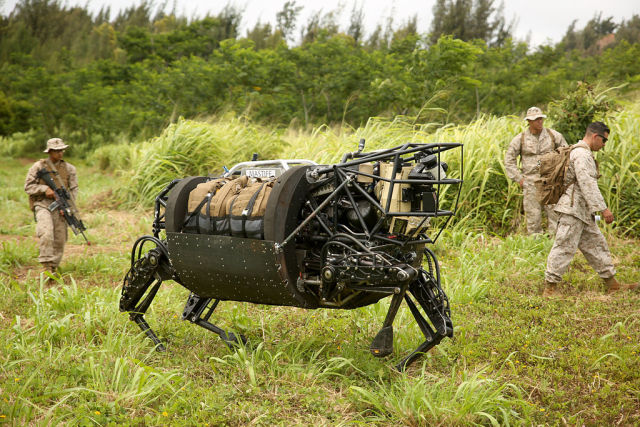The agency responsible for the internet, GPS, and stealth planes has also produced many other weird things. But, unfortunately, for every wild success of the ‘Defense Advanced Research Projects Agency (DARPA),’ there is also a rack of significant failures.
- What Makes DARPA so Unique?
- Plant-Eating Robots
- Self-Repairing Houses
- Lab-Grown Blood
- Cyborg Insects
- Brain Implants for PTSD
- Robotic Infantry Mules
- Nuke-Propelled Spaceship
- Mechanical Elephants
What do you think about mechanical elephants and telepathy research?
Are Robots about to take over the Battlefield? Lets find out.
What Makes DARPA so Unique?
It can go outside the red tape of bureaucracy to innovate. Where other agencies are bound, DARPA’s wild ideas stem from the fact that it is not subject to the standard acquisition rules. What does that mean? It means that DARPA has fewer restrictions – the potential for innovation (or weirdness) is endless!

In turn, this also means that they have lesser financial limitations, which enables them to invest in out-of-the-box longshot projects in hopes that it would pay off. Think of it this way, DARPA is military innovative venture capitalists.
Following are some exciting projects from DARPA’s “high-risk, high-reward” projects that make science fiction seem real:
Plant-Eating Robots
The Energy Autonomous Tactical Robot program at DARPA attempted to create robots that feed off plants as herbivores do. EATR enabled robots to eat plants so that they remain in surveillance or defensive positions for extended periods.
“We understand the public’s concern about futuristic robots feeding on the human population. But that is not our mission,” Harry Schoell, CEO of Cyclone Power Technologies, said in a press release.
In 2015, DARPA engineers estimated that EATR could travel 100 miles for every 150 pounds of biomass consumed. But is that worth it? We leave that for you to decide.
Self-Repairing Houses
Imagine this: houses made of lightweight scaffold instead of plywood, two-by-fours, and heavy sandbags. When damaged, it grows back again.
DARPA’s Engineering Living Materials program is to create building materials that can grow when needed. It even repairs itself. As researchers progress with 3D-printed organs, DARPA continues to use similar technologies to create hybrid materials.

These materials shape and support the growth of engineered cells.
Justin Gallivan, project manager, said, “Instead of shipping finished materials. We can ship precursors and grow them on-site using local resources. And, since the materials will be alive, they can respond to environmental changes and heal themselves in response to damage.”
Lab-Grown Blood
Blood pharming is a new-world process of creating red blood cells in a lab rather than the human body. These red blood cells come from cell sources. DARPA’s Blood Pharming program was to increase production efficiency and lower the high costs of growing red blood cells.
The program had aimed to increase access to transfusable blood if the project proved successful – especially for soldiers and hospitals worldwide. In addition, the project also seemed promising in terms of reducing the risk of disease transmission during a transfusion.
As reported in a 2013 press release, the program decreased the costs of synthetic blood from $90,000 down to under $5,000 per unit. However, the program did not make it to recent budget documents.
Cyborg Insects
Crewless Aerial Vehicles are a science favourite. Yet, they need people to design and assemble every single piece. And that is where innovators at DARPA came in. How does a spy bug sound? Spy bugs became a part of DARPA’s 2006 project. The project aimed to implant transmitters in insects to use them for surveillance.

Teams ran the hybrid Insect Micro-Electro-Mechanical Systems program at Cornell University and the University of Michigan. In a few years, researchers developed interfaces capable of controlling insects’ actions.
These insects also received nuclear power. Yes, you read that right.
Cornell engineers revealed a prototype of a radioactively-powered transmitter for cyborg insects in 2009. Nickel-23 isotopes provided enough power to the sensors and transmitters so that the bugs might carry it while remaining harmless to humans.
Brain Implants for PTSD
DARPA is not known only for its cool gadgets for fighting wars. It also funds research on solutions for war’s adverse effects on troops.
The Systems-Based Neurotechnology for Emerging Therapies program is for creating “an implanted, closed-loop diagnostic and therapeutic system for treating and even curing neuropsychiatric illness,” according to DARPA.
Brain implants help troops manage PTSD, anxiety, traumatic brain injuries, and substance abuse.
Robotic Infantry Mules
Lifting heavy materials is the number one cause that affects soldier health and performance. Identifying the critical cause, DARPA began to work with robotics company Boston Dynamics to manufacture the ‘Legged Squad Support System.’

The mule is capable of carrying 400 pounds. According to DARPA’s website, the program aims to “develop a robot that will go through the same terrain the squad goes through without hindering the squad’s mission.”
Now that is something that could give soldiers a “leg up” in the field.
Nuke-Propelled Spaceship
Currently, DARPA is also investing in space travel. Project Orion, a 1959 project, intended to research new means of spaceship propulsion. The hypothetical propulsion model relied on nuclear bomb detonations to power a craft forward. On paper, it is capable of hitting astonishing speeds. But, the project ended when the Partial Test Ban Treaty of 1963 banned detonations of nuclear weapons in outer space.
Mechanical Elephants
It was in the 1960s when DARPA started to research vehicles that enabled troops to move quickly through the rugged terrain of Vietnam.
DARPA concluded that elephants might do the job. Hence, the infamous project of DARPA, the mechanical elephant, began. They hoped the result would be that troops could transport heavy loads with servo-actuated legs.

But, according to New Scientist, when the DARPA director heard of the project, he immediately ended it. He hoped Congress would not have heard of it and cut the agency’s funding. We don’t know about you, but we sure would have loved to see some mechanical elephants roaming the battlefields.





